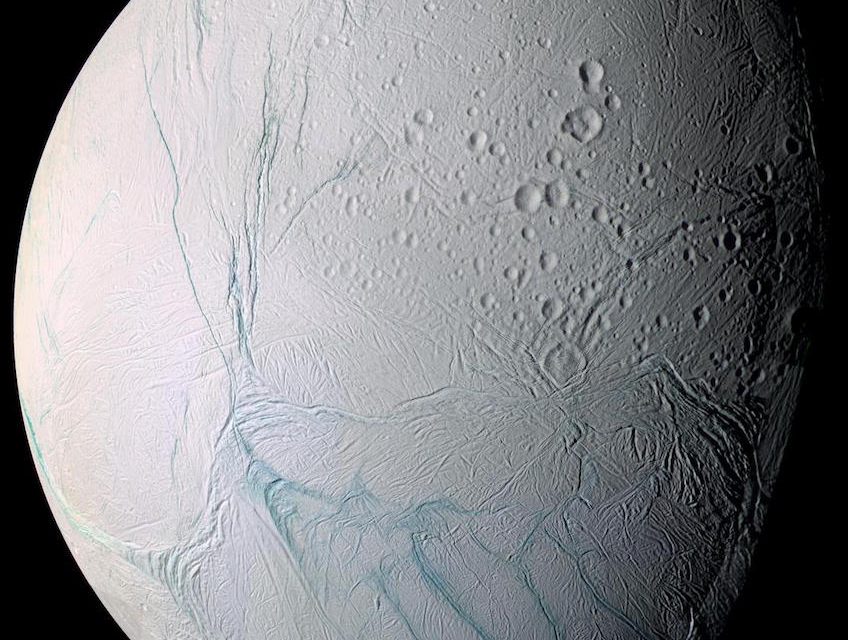Researchers at the University of Vienna, Austria have given new hope to the theory that life could exist on Saturn’s moon, Enceladus. It involves gas. Beautiful, life giving gas.
This is pretty amazing stuff. Okay, so scientists have postulated that, based on observations from the Cassini probe’s time around Saturn, there could be hydrothermal vents on Enceladus. NASA’s Cassini “spotted tiny silica particles and molecular hydrogen (H2) in the moon’s plume, both of which are best explained by reactions between hot water and rock.” There are liquid oceans beneath the icy surface, and the theory is that hot vents in those oceans could support microbial life that gobble up H2, much like they do on Earth. So, researchers in Vienna did their best to mimic conditions on Enceladus with microbes from Earth, to see if they might survive.
RELATED: NASA Releases Spectacular New Photos of Jupiter from Juno Spacecraft
They did survive. According to space.com, researchers exposed a microbe from a hydrothermal vent at a depth of 3,200 feet off of Okinawa called “M. okinawensis to a variety of gas compositions and (relatively high) pressures at 150 degrees Fahrenheit (65 degrees Celsius) — basically, what you’d expect to find at hydrothermal vents on Enceladus’ seafloor.” It did well. In fact, it did so well that it produced methane as a metabolic byproduct, which means it’s happy. Methane is also found in those plumes off of that moon. “Hence, some of the methane detected on Enceladus could in principle be of biological origin,” said co-author Simon Rittmann, of the Department of Ecogenomics and Systems Biology at the University of Vienna.
Now, nobody is saying that life definitely exists on Enceladus. But, the results of this study are encouraging scientists to dig deeper, and explore further. There are no current missions to Enceladus planned. So, we have some time before that outbreak of space bacteria hits Earth.
- UNCHARTED Release Date Pushed to 2021 - January 25, 2020
- You Can Help Name NASA’s Mars 2020 Rover - January 25, 2020
- Watch the Feel-Good Magic in Trailer for SHORT CIRCUIT Series from Disney+ - January 24, 2020

